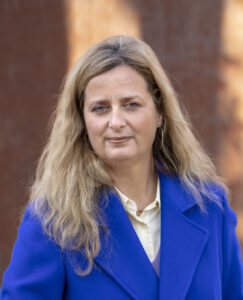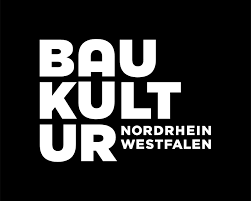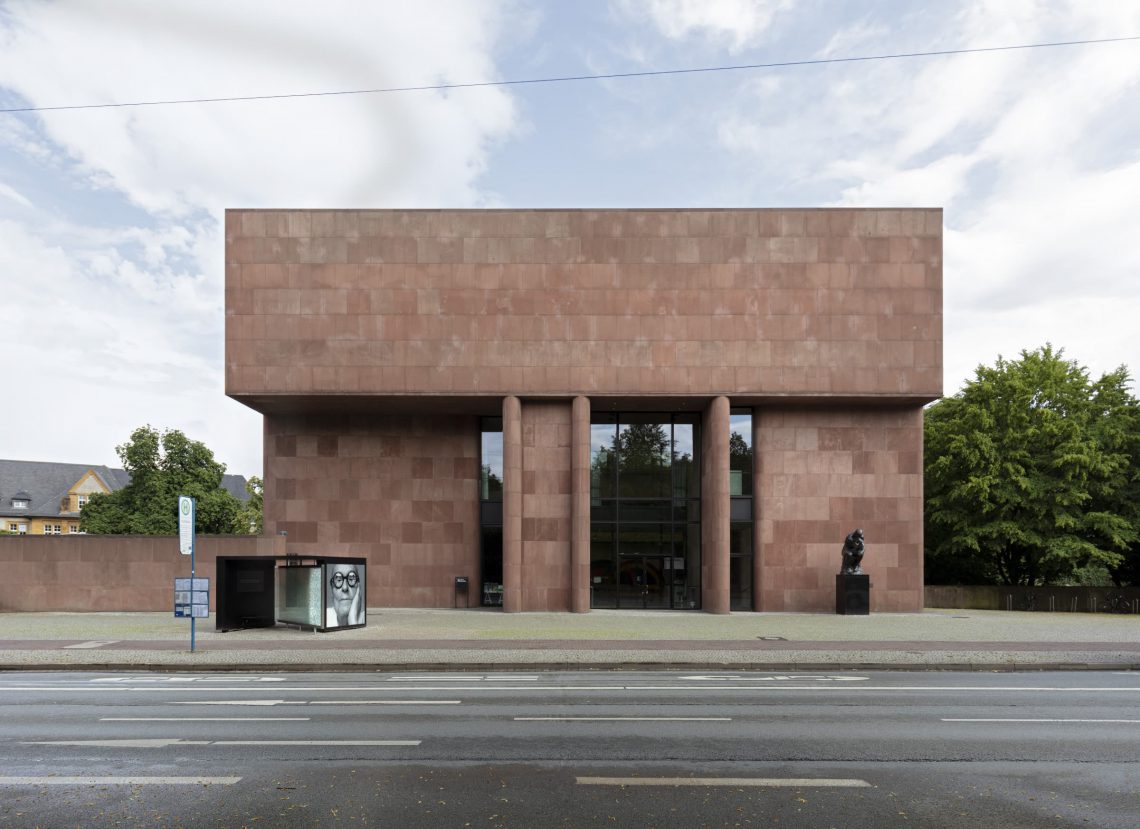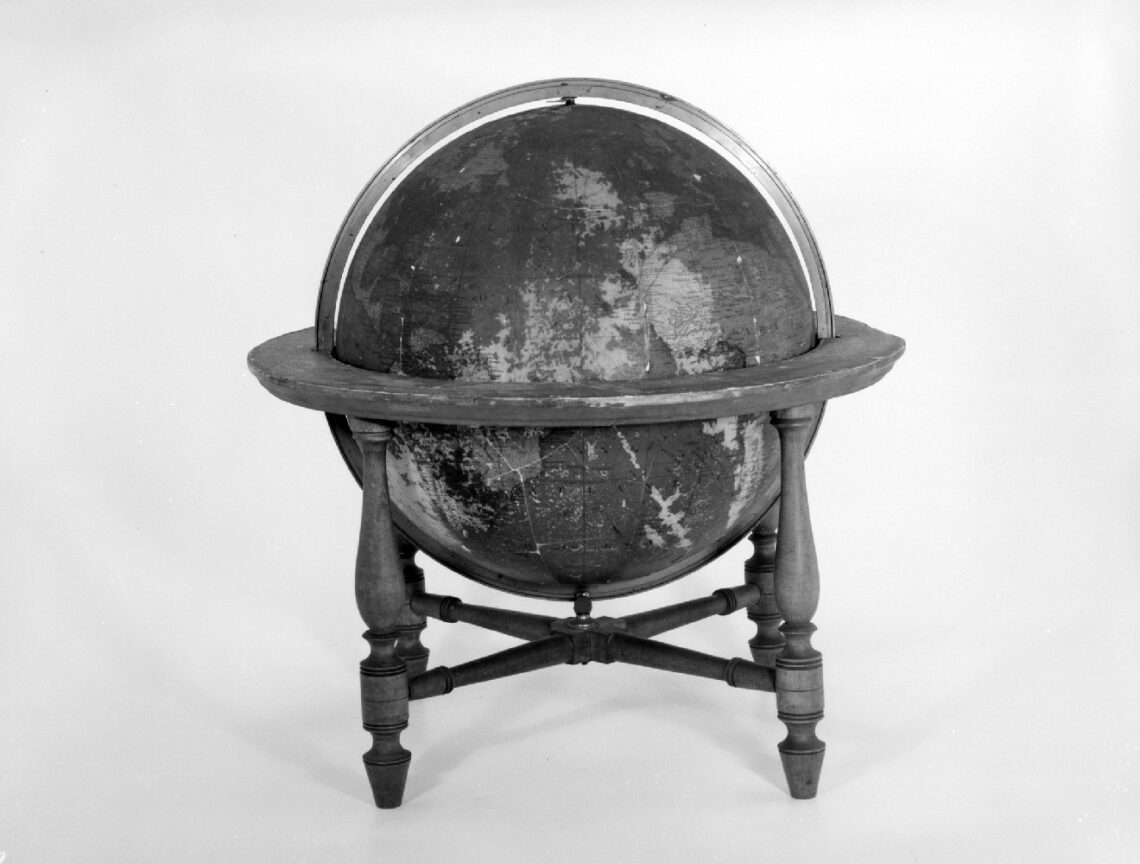Kunsthalle Bielefeld – developing for the 21st century: renovation/expansion
A text by Christina Végh
The Kunsthalle Bielefeld‘s historic building requires renovation and expansion in order to accommodate future twenty-first-century needs. Today’s museums must emphasize inclusion, participation, and sustainability. The Kunsthalle Bielefeld’s building no longer adequately meets these requirements, necessitating extensive changes. Besides making more room for large works of art, education, and administration, the goal is to create new places that encourage participation and inclusion. The purpose of the renovation is to equip the historic building for sustainability and to preserve resources so that art from the twentieth and and twenty-first centuries can be presented in dialog with a broader urban audience.
Philip Johnson’s historic building is the only museum in Europe designed by the American architect; it opened in 1968, just two weeks after the Nationalgalerie in Berlin was opened. What does it need in order to be fit for the twenty-first century? This is the question that fuels all of the ideas for the renovation and expansion of the Kunsthalle Bielefeld. Only this kind of planning will guarantee sustainability, while also protecting resources and ensuring that the building, which is landmarked, will remain viable in the future.
From the time that the Kunsthalle Bielefeld was conceived in the 1960s, the tasks of a museum have changed considerably. A new definition of the museum was adopted at the 26th general conference of the International Council of Museums (ICOM) in 2022. The new emphasis is on inclusion, participation, and sustainability:
“A museum is a not-for-profit, permanent institution in the service of society that researches, collects, conserves, interprets and exhibits tangible and intangible heritage. Open to the public, accessible and inclusive, museums foster diversity and sustainability. They operate and communicate ethically, professionally and with the participation of communities, offering varied experiences for education, enjoyment, reflection and knowledge sharing.”[1]
– – –
The Kunsthalle Bielefeld’s historic building has proven inadequate for classic museum operations (exhibitions, storage), such as the display of the large artworks and installations that have become common since the 1970s, as well as professional deliveries and storage. There is also not enough room for educational and administrative purposes. Additionally, the building totally lacks spaces and areas that would enable more programs and formats promoting participation or inclusion, as well as “in-between spaces” that are easily accessible, open, and inviting to a broad, diverse urban audience. This addresses the characteristics of the “third place” that the sociologist Ray Oldenburg called “the great good place” in 1989—meaning a protected public space where people with very different interests and motivations can spend time. Today’s successful museums have these kinds of areas.
The concept for the museum—worked out by the museum’s director at the time, Joachim Wolfgang von Moltke, in close cooperation with the architect Philip Johnson and the museum donor Rudolf-August Oetker—was, however, extremely progressive for its era. In a letter dated May 8, 1964, when finances made it imperative that painful budget cuts be made (among other things, the square footage of the building was reduced from 40 x 40 m to 30 x 30 m), von Moltke argued against Oetker as follows:
We find ourselves in a predicament. We cannot assume that in the foreseeable future we will have a collection comparable with those in Düsseldorf, Essen, Cologne, and other cities. So, I have proposed that we regard these limitations in a positive light and create something that does not exist at all in Germany, and only rarely in Europe: a museum where the link between educational and artistic tasks is saliently expressed by working more intensely with the public.[2]
Thus, along with the Nationalgalerie in Berlin, the Museum Folkwang in Essen, and the Wilhelm Lehmbruck Museum in Duisburg, the Kunsthalle Bielefeld is not only one of the first new museums built in what was then the young Federal Republic of Germany but was also one of the first to firmly allocate space for education, in the form of the “painting workshop.” Now, what was then a novelty has long been considered standard, and it requires infrastructure that our historic building is no longer able to supply. Johnson’s open floor plan, which provided kaleidoscopic views, constantly broached new relationships (dialog) among the works via the different rooms and floors, and did not dictate to visitors which direction to take, is anchored in significant principles that guide us today and will continue to do so in the future. What continues to be important is the dialog between artworks and people, as well as the invitation to the public to determine for themselves how they experience the building and the art—although, just like the establishment of education, they require additional types of spaces today.
Von Moltke’s concept was not only very deliberate, but also foresighted when he wrote in the same letter: “(…) I have made it very clear to Philip Johnson that it must be possible to expand the building later, if we build a smaller version of it now. I cannot simply think of my tenure but must also take care that my successors can have a building that they can continue to develop.”[3]
After more than fifty years, it is not only necessary to renovate the Kunsthalle Bielefeld in terms of energy and resource conservation but also to make the museum fit for the twenty-first century. To do so, it is imperative to replace previous functions that are no longer suitable with new, necessary ones: room for larger formats, for education and administration, as well as places where visitors can while away the time, where more and different kinds of meetings are possible. This will enable the Kunsthalle to present the twentieth and twenty-first-century art in constant dialog, and to welcome a broad, increasingly more diverse urban audience. The guiding principle here is “more and more is not enough.” All of the measures serve the sole purpose of ensuring that the historic, landmarked, late modernist building has everything that a museum needs in the twenty-first century to conserve resources, be sustainably maintained, and to display art from the twentieth and twenty-first centuries in exchanges, interactions, and dialogs with present-day and future generations.
[1] https://icom.museum/en/resources/standards-guidelines/museum-definition/
[2] Kunsthalle Bielefeld, 1968/2018, cit. according to Friedrich Meschede „Chronologie einer Institution für bildende Kunst in Bielefeld“, (Cat.), Cologne 2018, p. 52.
[3] ibid.

Director of the Kunsthalle Bielefeld
Since February 2020, art historian Christina Végh (*1970 Zurich) has been director of Kunsthalle Bielefeld. Previously, she directed the Kestner Gesellschaft in Hanover from 2015, and was director of the Bonner Kunstverein from 2004 to 2014. Her first station after her studies at the University of Zurich (art history, ethnology, philosophy) and a stay at the University of California Santa Cruz, was the Kunsthalle Basel, where she worked as curator from 2000 to 2004. Végh has curated exhibitions with Monica Bonvicini, Monika Baer, John Baldessari, Rita McBride, Haegue Yang, Charline von Heyl, Annette Kelm, James Richards, Franz Erhard Walther or Christopher Williams, among others, and is also responsible for extensive group exhibitions such as “Where Art Can Happen. The Early Years of Cal Arts” (co-curator Philipp Kaiser) or “Made in Germany Three” and published in corresponding catalogs. Végh is active in numerous committees and juries, including in 2017 as a guest juror of the Wolfgang Hahn Prize, Ludwig Museum Cologne or at Pro Helvetia as a member of the Art Biennale jury (2015-2018), and since 2018 she has been a member of the jury of the Justus Bier Prize. From 2008-2012 Végh was involved in the board of the Arbeitsgemeinschaft der deutschen Kunstvereine (AdKV). In 2010, Végh was awarded a prize for art and architecture education by the Swiss Arts Commission of the Federal Office of Culture.
The symposium is sponsored and supported by:





